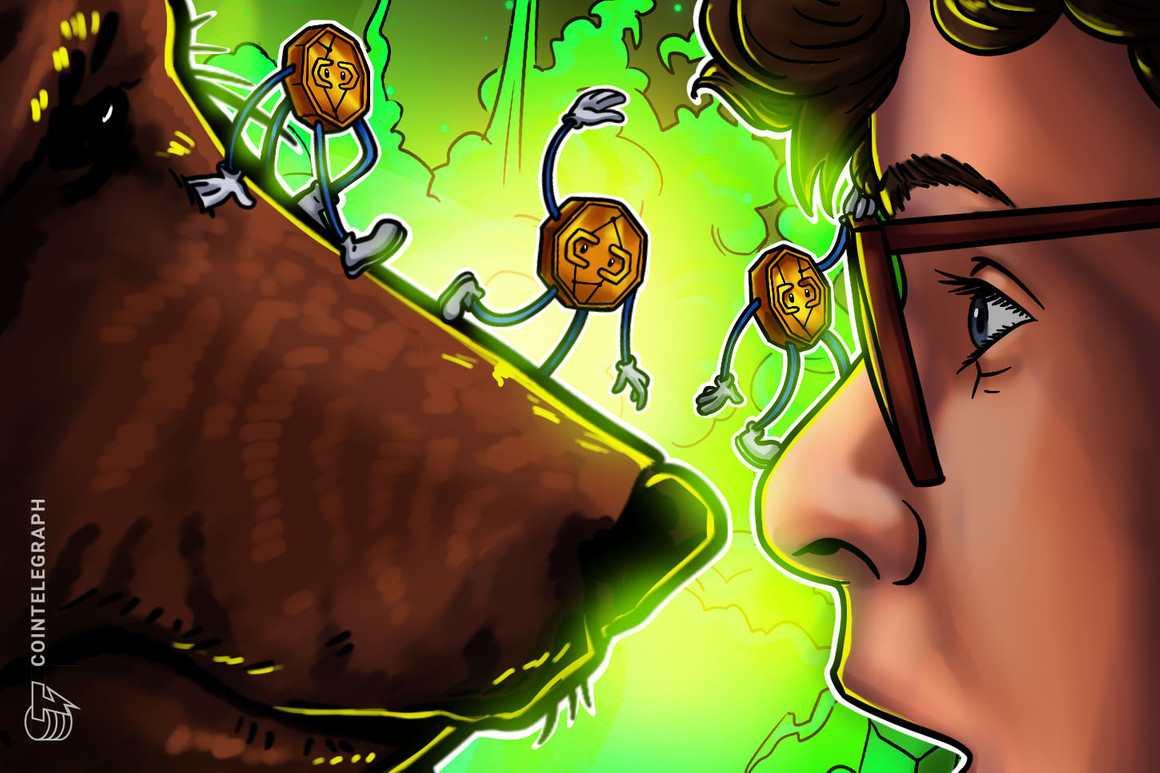Usually, bear markets bring about a feeling of uncertainty in any investor. Even more so for a newcomer, for whom it can feel like the end of the worl
Usually, bear markets bring about a feeling of uncertainty in any investor. Even more so for a newcomer, for whom it can feel like the end of the world. It may even be common knowledge that during bull cycles, investors are sure of making gains. Whereas in bear markets such as this, an unimaginable amount of pessimism sets in.
The co-founder and strategic lead at the Kylin Network, Dylan Dewdney, told Cointelegraph that the two major mistakes that investors make while feeling anxious are “One, over-investing and two, not investing with conviction.”
“You need to find the sweetspot where you have enough conviction in your investments while managing the resources devoted to them such that you are 100% comfortable with being patient for a long time. Lastly, bear markets are where the magic really happens — buying Ether at $90 in December 2019, for example,” Dewdney said.
According to data from blockchain analysis firm Glassnode, traders made almost 43,000 transactions buying and selling requests on crypto exchanges in early May. This accounted for a whopping $3.1 billion worth of Bitcoin. But, the panic that caused those requests came from the crash of Terra, which saw the market dip even further.
Bear markets occur when there is a general dip in the prices of assets, of at least 20%, from their most recent highs. For example, the current bear market has Bitcoin (BTC) down by more than 55% from its November record high of $68,000. Bitcoin is now trading below the $25,000 mark at the time of writing.
Bear markets: Genesis, severity and how long they last
Bear markets are often tied to the global economy, according to Nerdwallet. That is, they occur either before or after the economy goes into recession. Where there is a bear market, there’s either an ongoing economic meltdown or an upcoming one.
Essentially, a sustained price dip from recent highs is not the only indicator of an ongoing bear market. There are other economic indicators that investors must still factor in. This is to enable them to learn whether a bear market is playing out or not. Some of the indicators include interest rates, inflation and rate of employment or unemployment, among others.
However, the relationship between the economy and a bear market is even simpler than that. When investors notice that an economy is shrinking, there are widespread expectations that corporate profits will soon start to reduce as well. And, this pessimism brings them to sell off their assets, thus, pushing the market even lower. As Scott Nations, author of The Anxious Investor: Mastering the Mental Game of Investing, says, investors often overreact to bad news.
In any case, bear markets are shorter than bull markets. According to a recent CNBC report, bear markets last about 289 days. Bull markets, however, can go even above 991 days. Additionally, an Invesco data analysis report puts the losses attached to bear markets on an average of 33%. So, down cycles are usually not as effective as the average gain of 159% of a bull market.
Recent: DeFi pulls the curtain on financial magic, says EU Blockchain Observatory expert
Although no one knows for sure how exactly long a bear market might last, there are a few tips on how to weather it.
Navigating a bear market
As an investor, there is probably nothing anyone can do to prevent an unfavorable market condition or the economy at large. Nonetheless, there are lots of potentially great moves that one can make to protect their investments.
Dollar-cost averaging
Dollar-cost averaging (DCA) describes an investment strategy in which an investor buys a fixed dollar amount of a certain asset on a regular basis, regardless of that asset’s price in dollars. The strategy is based on the belief that over time, prices will generally pick up the pace and eventually trend upward during a bull run.
The head of research at CoinShares, James Butterfill, told Cointelegraph that Bitcoin now has a well-established inverse correlation to the United States dollar:

“This makes sense due to its emerging store of value characteristics, but it also makes it incredibly sensitive to interest rates. What has pushed Bitcoin into a ‘crypto winter’ over the last six months can by and large be explained as a direct result of increasingly hawkish rhetoric from the Fed. The Federal Open Markets Committee (FOMC) statements are a good indicator of this, and we can observe a clear connection to statement release times and price moves.”
When this prudent investment approach is mastered, the investor’s buy price is averaged over time. That is, one can enjoy the benefits of buying the dip and also avoid investing all their life savings during market highs. After all, as dreaded as bear markets are in the investment world, they are also the best times to buy crypto assets at the lowest prices.
Diversify your portfolio
For investors who have a diverse range of assets…
cointelegraph.com
